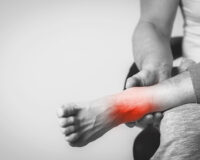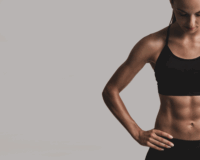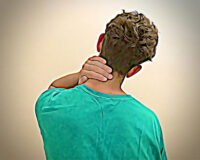
Toning the Thighs, Gluteus and Pelvic Floor
Coming into Spring and Summer, we often get asked about the best exercises to tone the buttocks and thighs. Whether it’s because of injury, or to fit into that summer bikini better, the reasons are many!
So, we thought it would be handy to provide a collection of exercises to target these areas. In addition, because the pelvic floor muscles tie in nicely with the glutes (buttocks) and thighs, and are always beneficial to improve, we have added in exercises for these muscles too.
How will I know if I have weakness in these muscles?
The main signs of pelvic floor weakness are fairly obvious. The pelvic floor muscles work to contain all of the internal organs, and prevent any leaking from the bladder and bowel. Therefore, weakness in these muscles will manifest as involuntary release of urine, gas or bowel contents. This may happen under stress to the pelvic floor (eg. coughing, sneezing, laughing etc), or may involve an overwhelming urge to get to the toilet ASAP (the most common time is when the key is in the front door!). It is not particularly normal to experience these symptoms, and a definite sign that pelvic floor strengthening is required.
Signs of weakness or inactivity of the gluteals are a bit more subtle. Signs may include pain, either in the lower back, hip and/or knee. Occasionally, it will be associated with a change in walking pattern (A.K.A. Trendelenburg gait), balance or standing posture. There may also be stiffness in the hips and lower back, and a possible history of hamstring or groin strains.
How long will it take to strengthen my muscles?
This can be a tricky question, and will vary somewhat for most people. The reason there is no clear answer to this question is that it depends on many factors, including where you’re starting from, how consistent you are, how well you look after yourself normally, and even genetics.
Having said this, some recent evidence points to the ideal time to continue exercises to achieve the best results is 3 months (minimum). It is good to note that there will be gains along the way, and even gains in other areas (such as sleep improvements, more energy, and increased strength). Obviously though, it is important to continue the exercises to continue the gains!
The Exercises:
Pelvic Floor:
Exercising the pelvic floor can be challenging to perform correctly. It is important to note that it is an exercise where nothing moves apart from the pelvic floor, and the pelvic floor should move upwards. The good news about this is that you can do these exercises anywhere, and no-one will even know!
There are some common ways the body will ‘cheat’, including:
- Tightening the abdominal muscles and buttocks (which should remain relaxed),
- Holding your breath (you should be able to breathe normally during these exercises)
- Pushing down on your pelvic floor (it should only ever be a pulling up movement)
** Before you begin these exercises in particular, if you are uncertain if you are performing them correctly, it is ALWAYS a good idea to ask your physiotherapist to check – if you are doing these exercises incorrectly, you will not be strengthening the correct muscles and may make any unwanted symptoms worse **
…………………………………………………….
Pelvic Floor Lifts
This is the most important, and most basic, of the pelvic floor exercises.
It is important to feel relaxed. Try lying on your back with your knees bent up.
Breathe out, then gently lift your pelvic floor up as if you are trying to prevent any gas escaping. Slowly relax
Start with trying to do a 20% lift (20% effort), then increase to 50%, and up to 100%. Note any ‘cheating’ movements.
Repeat for 20+ repetitions, or until fatigue
…………………………………………………….
Leg Slides
This is a progression of the above exercise, and asks the pelvic floor muscles to work with movement (which is much more natural)/
Start with a gentle pelvic floor lift, then slowly slide one leg out along the floor while keeping for pelvic floor tightened. Then, slowly slide the leg back in
Try 5 repetitions on each side
…………………………………………………….
Glutes and Thighs:
Exercising the glutes and thighs can be fun! It can also involve a fair bit of ‘muscle burning’ pain – which is usually a good sign of correct performance, but not something I’d necessarily recommend pushing through. It can be a great idea to combine the following exercises with a gentle pelvic floor lift (as above) to maximise the benefits.
…………………………………………………….
Clams
Start lying on your side with knees bent slightly. Make sure your shoulders, hips and feet are in a straight line.
Keep your feet together, back still and gently open your knees apart.
Repeat 10+ times on each leg, or until fatigue
…………………………………………………….
Open Clams (Progression)
As above, make sure your body is aligned well.
This time, lift your feet up, keep your lower knee on the floor and lift your knees apart.
Repeat 10+ times on each leg, or until fatigue
…………………………………………………….
Prone Knee Bend
Start by lying on your tummy, feel the front of your hips on the floor.
Bend one knee to 90 degrees and then slowly lift thigh off floor (the front of your hips should stay firmly on the floor)
Once lifted, straighten your leg in the air, then slowly lower your straight leg
Repeat 10 times each leg
…………………………………………………….
Bridge (Feet up on Wall)
Start with lying on your back, feet up on wall (with knees bent to 90 degrees)
Slowly roll the pelvis off the floor, followed by one vertebra at a time
Return by slowly roll one vertebra at a time back down again, finishing with the pelvis
Repeat slowly, 10+ times
…………………………………………………….
Bridge on Fitball
Start lying on your back, with legs on a fitball. Slowly roll your pelvis and back off the floor, one vertebra at a time.
Keep your back steady, and slowly roll the fitball in towards you, then slowly back again.
Repeat slowly 10+ times.
…………………………………………………….
Squats (Against Wall)
Start standing with your back against a smooth wall/door, with feet out in front
Slowly slide down, making sure that your knees go over your feet (but not past)
Perform this exercise slowly for maximum benefit, and feel free to hold your squat position if comfortable
Repeat slowly 10+ times
…………………………………………………….
Exercises on the Pilates Equipment:
In addition to the above exercises, which can be performed safely and easily at home, we have added a few targeted exercises on our Pilates equipment (Reformer, Trapeze Table and Multi-Chair) for your interest:
…………………………………………………….
Scooter (Reformer)
…………………………………………………….
Standing Sideways Leg Press (Reformer)
…………………………………………………….
Plies in Straps (Reformer)
…………………………………………………….
Knee Floats (Trapeze Table)
…………………………………………………….
Reverse Leg Press in 4-pt Kneel (Trapeze Table)
…………………………………………………….
Bridge (Trapeze Table)
…………………………………………………….
Leg Press (Multi-Chair)
…………………………………………………….
As you can see, there are many different exercises that target the pelvic floor, gluteals and thighs. Some will feel relatively easy, while others may require more concentration. With practice, they should all start to feel easier, and the muscles will start to feel stronger and work more efficiently. The important thing to remember is that they should not cause pain.
A good sign of improvement, apart from visual improvements, is that everyday tasks may start to feel easier – this is an excellent sign, as it shows that the body is using the added strength to its advantage!
If you would like to know more about these exercises, or to learn about others, please ask your Therapia physiotherapist, or inquire during your Pilates class.
We are always available to be contacted, either by phone 8221 5011, or by email info@therapia.com.au
Book Appointment




